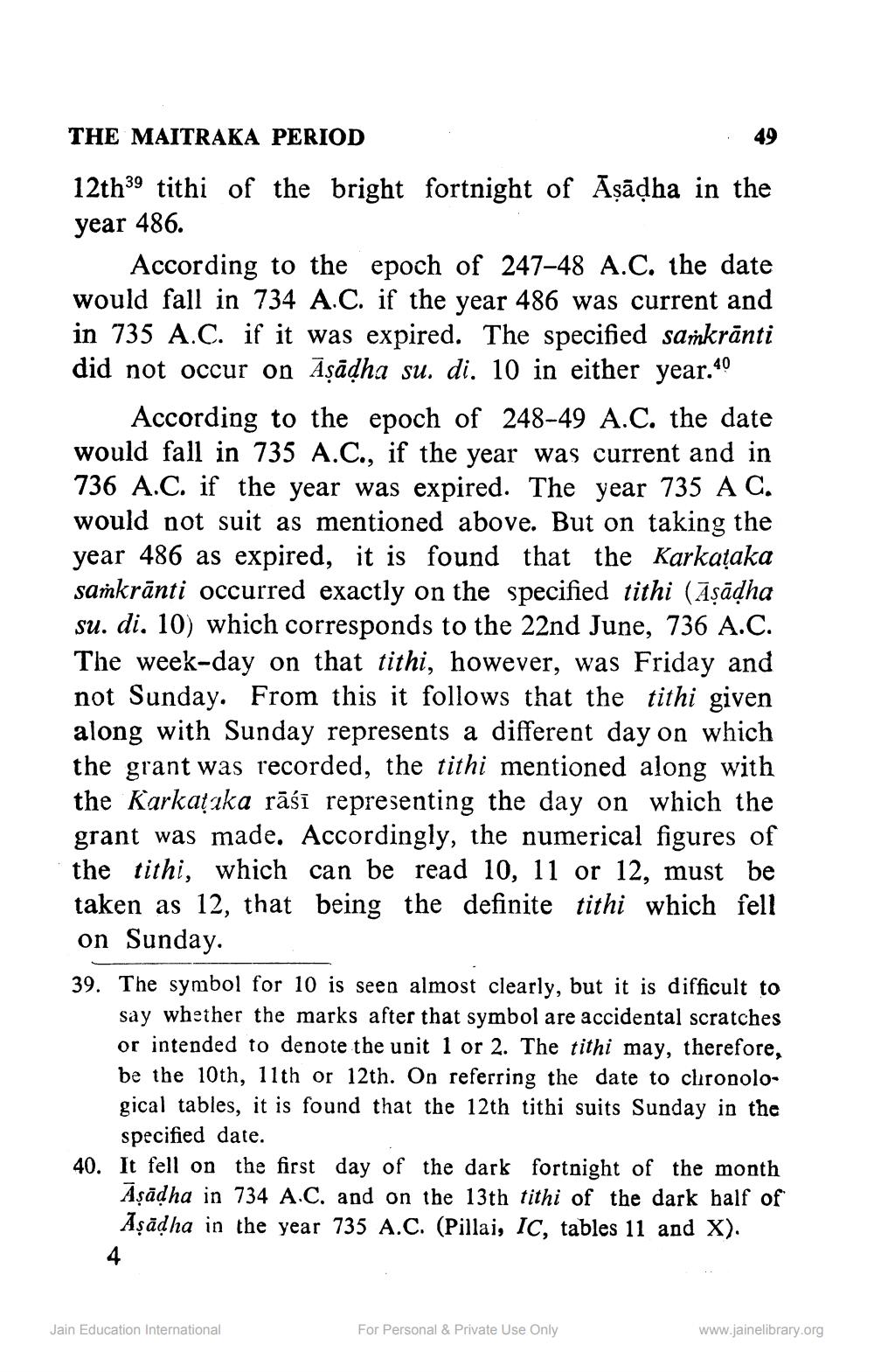________________
THE MAITRAKA PERIOD
: 49
12th39 tithi of the bright fortnight of Aşādha in the year 486.
According to the epoch of 247–48 A.C. the date would fall in 734 A.C. if the year 486 was current and in 735 A.C. if it was expired. The specified samkrānti did not occur on Āşādha su. di. 10 in either year.40
According to the epoch of 248-49 A.C. the date would fall in 735 A.C., if the year was current and in 736 A.C. if the year was expired. The year 735 A C. would not suit as mentioned above. But on taking the year 486 as expired, it is found that the Karkațaka saņkrānti occurred exactly on the specified tithi (Aşādha su. di. 10) which corresponds to the 22nd June, 736 A.C. The week-day on that tithi, however, was Friday and not Sunday. From this it follows that the tithi given along with Sunday represents a different day on which the grant was recorded, the tithi mentioned along with the Karkataka rāśī representing the day on which the grant was made. Accordingly, the numerical figures of the tithi, which can be read 10, 11 or 12, must be taken as 12, that being the definite tithi which fell on Sunday. 39. The symbol for 10 is seen almost clearly, but it is difficult to
say whether the marks after that symbol are accidental scratches or intended to denote the unit 1 or 2. The tithi may, therefore, be the 10th, 11th or 12th. On referring the date to chronological tables, it is found that the 12th tithi suits Sunday in the
specified date. 40. It fell on the first day of the dark fortnight of the month
Aşādha in 734 A.C. and on the 13th tithi of the dark half of Aşādha in the year 735 A.C. (Pillai, IC, tables 11 and X).
Jain Education International
For Personal & Private Use Only
www.jainelibrary.org




